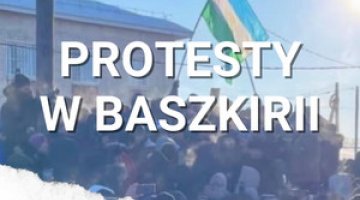Tenth massive shelling of Ukraine. 309th day of the war

On 29 December, the Russians launched their tenth consecutive missile strike against the enemy’s critical infrastructure, immediately preceded by a smaller-scale attack using kamikaze drones. According to the Ukrainian Air Force, on 30 December, the defenders allegedly shot down 58 of the 70 cruise missiles and 11 drones used by the aggressor. In contrast, the General Staff of the Ukrainian army reported that 85 missiles were used in the attacks. The enemy was to strike again on the night of 30 December using drones. Defenders reported that all of them were shot down (16 in the east of the country and seven over Kyiv and its environs), with losses caused by shrapnel.
The 29 December attacks damaged 28 sites in 10 oblasts. The most severe damage was reported in Kharkiv, Kyiv, Lviv, Odesa and Zaporizhzhia. However, details of the impact of the strikes and the state of the energy infrastructure were not provided. According to a few local reports, 40% of electricity was cut in Kyiv and up to 90% of consumers in Lviv. In the evening, 470,000 subscribers in the Lviv Oblast and 450,000 in the Odesa Oblast were said to be without electricity.
The aggressor’s artillery and air force continued to strike enemy army positions and facilities along the contact lines and in border areas (there was an increase in shelling in the Sumy Oblast). Kherson and Nikopol and their surroundings and the coastal part of the Mykolaiv Oblast (mainly the Ochakiv area) are under permanent fire. Kharkiv has again become a permanent target of attacks. After a pause of a few weeks, the suburbs of Mykolaiv were also shelled again. The Ukrainian artillery and air force mainly attacked enemy positions and facilities in the Donbas and Zaporizhzhia Oblast. On 29 December, Russian sources also reported further Ukrainian sabotage attempts in Dzhankoi in the Crimea and a drone attack on the Engels strategic air base in the Saratov Oblast.
The arena of the heaviest clashes remains the area around Bakhmut. According to the Ukrainian General Staff, up to 20 Russian attacks occur daily, and Ukrainian positions in and around the city account for more than 40 per cent of the shelling carried out along the entire battle line between Kupiansk and Marinka. The invaders attempted to widen the breach to the north-east of Bakhmut (in the Yakovlivka area) and to drive the defenders from its north-eastern outskirts. On 29 December, they were also to launch a flanking attack southwest of the city, where they were repulsed near the village of Ivanivske. Ukrainian forces also held off further enemy attacks north and east of Siversk, north and south of Avdiivka, west of Donetsk and on the border of Kharkiv and Luhansk blasts. On 27 December, there was also to be an unsuccessful Russian assault in the western part of the Donetsk Oblast (near Zolota Nyva). Ukrainian sabotage and reconnaissance groups were also expected to activate in this area and the bordering part of Zaporizhzhia Oblast. At a press conference on 29 December, General Oleksiy Hromov, representing the Ukrainian General Staff, announced that within a week, the defenders had moved up to 2.5 km towards Kreminna.
On 28 December, French Defence Minister Sébastien Lecornu visited Kyiv. The parties agreed to start a programme to train Ukrainian Air Force officers in the operation of the new air defence systems (details to be provided later). According to press reports, the 18 new HIMARS launchers that the Americans plan to deliver to Ukraine in the coming years will be equipped with the IFATDS (International Field Artillery Tactical Data System) automated fire control system.
The Security Service of Ukraine is continuing a counter-intelligence operation that began on 22 November at facilities used by the Ukrainian Orthodox Church of the Moscow Patriarchate (UOC-MP). On 29 December, seven properties in Khmelnytskyi Oblast and four in Dnipropetrovsk Oblast were searched. Evidence of the clergy’s collaboration with Russian special services, including support for sabotage groups, is being sought. The operation is intended to provide a basis for banning the UOC-MP. On 27 December, Minister of Culture Oleksandr Tkachenko announced that the authorities would not prolong the lease of the Kyiv-Pechersk Lavra facilities. A day later, National Security and Defence Council Secretary Oleksiy Danilov called on the clergy to publicly disassociate themselves from the Moscow Patriarchate and condemn the Russian President.
The head of Ukraine’s military intelligence service (HUR), Kyrylo Budanov, in an interview with the BBC on 29 December, stated that fighting on the frontline had reached an impasse, as forces on both sides – in both the east and south of the country – were unable to make significant advances. He dismissed the possibility of an offensive on Kyiv from Belarusian territory in the near future. He saw the activity of enemy units in that country as a tactical manoeuvre to force Ukraine to shift additional forces to the Belarusian direction and thus weaken the potential in other directions. According to a communiqué from the Ukrainian border service, Russia has assembled a grouping of 10,200 troops in Belarus. These forces are not sufficient to launch an attack on Ukraine.
On 29 December, a Ukrainian S-300-type missile fell in the village of Harbakha, in the Brest Oblast of Belarus, about 50 km from the border with Ukraine. The defence ministry stated that air defence shot down the missile, and a protest note was handed to the Ukrainian ambassador. On the same day, the Ukrainian Defence Ministry assured that it was ready to investigate the circumstances of the incident. Kyiv stressed that it was aware of the Kremlin’s efforts to draw Belarus directly into the war and therefore did not rule out a deliberate provocation: the trajectory of the cruise missiles was set in a way that that Ukrainian air defences would intercept them over Belarusian territory.
The authorities in occupied Crimea have declared a high terrorist alert from 6 to 21 January 2023. This means they are reckoning with the possibility of Ukrainian forces carrying out sabotage operations on the peninsula.
On 29 December, Volodymyr Zelensky signed laws allowing preferential imports of Starlink communication systems and power generators – they will be exempt from VAT and customs duties until May 2023. The decision is intended to minimise the impact of Russian missile attacks targeting critical facilities.
Commentary
- Another missile attack on Ukrainian critical infrastructure confirms that Moscow’s actions are calculated to maintain the permanent destabilisation of its opponent’s energy system. As in previous cases, the strike targeted the most rapidly repaired system elements and occurred when Ukraine was beginning to transition from emergency to planned power cuts. In its information policy, Kyiv is trying to take advantage of the increasingly long intervals between attacks – the previous one took place on 16 December. Kyiv is reporting the deterioration of the aggressor’s ability to conduct missile strikes – according to HUR, the Russian army can carry out at most two more similar attacks, after which its stockpile of missiles will run out. The Air Force Command is trying to tone down the optimism of the intelligence and maintains an unchanging message about the high effectiveness of Ukraine’s air defence.
- The regime in Minsk reacted to the incident involving the downing of a Ukrainian missile on Belarusian territory with a reserved response. The defence ministry has taken up the case, and the Investigative Committee is conducting an investigation. Alyaksandr Lukashenka has not commented on the event, and the regime media have limited themselves to a succinct message. This indicates that Minsk – at least at this stage – does not want to recognise the incident as an act of aggression against Belarus, as this would put the question of retaliation and the use of its armed forces on Ukrainian territory on the agenda. Such an escalation is not in the regime's interests, which wants to limit its support of aggression to providing freedom of action and logistical assistance to Russian forces.




